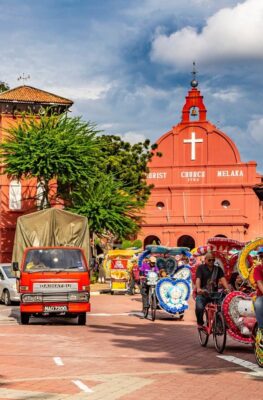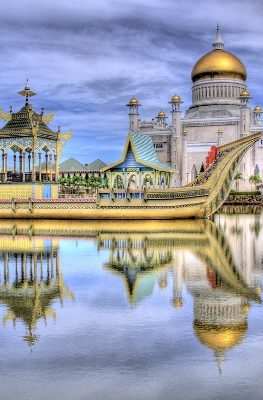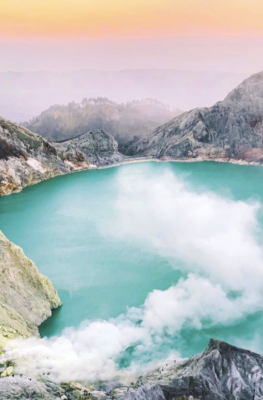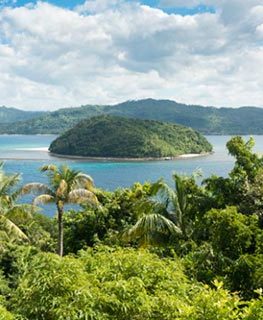Published on February 27, 2018
Kuching, Malaysia. Image courtesy of Tourism Malaysia.
Weird? Southeast Asia loves weird. The seriousness of the region’s grandest temples and most majestic tourist attractions aside, a few hidden corners revel in the locals’ quirky sense of imagination, as a few travel bloggers have been happy to explain to us.
Kuching, Malaysia: Cat Lovers’ Dream
Lola Méndez of Miss Filatelista (Facebook|Twitter|Instagram) is quick to disclaim the label of “cat lady”, but finding herself in the Malaysian city of Kuching, she found it difficult to avoid the cute cats everywhere.
“For starters, Kuching means cat in Malay!” Lola tells us. “The Sarawak, Borneo, capital city lives up to its name too with endless massive cat statues, purrfect motifs, and kitschy kitty street art around the city.
“But don’t fret if that isn’t enough to make your cat fantasies come true – the World’s first Cat Museum is in Kuching!” she continues. “The gallery has over 4,000 exhibits, photos, and artwork all dedicated to the majestic feline. Don’t miss the mummified Egyptian cat and the educational exhibit which informs guests about the five wild cat species that are native to Borneo!”
10 Courts of Hell, Haw Par Villa, Singapore. Image courtesy of the Singapore Tourism Board.
Haw Par Villa in Singapore: Underworld Theme Park
Mike Aquino of Southeast Asia Time Traveler (Facebook|Twitter|Instagram) recommends going to see Singapore’s most un-Singapore-like corner, a theme park in Pasir Panjang inspired by Chinese mythology. “The creator of Tiger Balm was something of a traditionalist,” Mike tells us. “So he leveraged his wealth to build a park that upholds traditional Confucian values.”
The park consists of over a thousand statues and 150 giant dioramas, depicting scenes from Chinese folklore and history. The depictions of Chinese Hell have given nightmares to Singaporean children for generations.
“The Aw family no longer owns the place; the government now runs it,” Mike tells us. “That’s all for the tourists’ benefit: now you can take a guided tour, through the whole place, though visitors should be prepared for the ‘horrors’ of the ’10 Courts of Hell’ exhibit.” Best of all – for tourists used to Singapore’s high prices – admission to the park is completely free of charge!
Plain of Jars, Laos. Image courtesy of A Social Nomad.
Mysterious Receptacles: Laos’ Plain of Jars
For something less quirky and more eerie, Sarah Carter & Nigel Dockerty of A Social Nomad (Instagram|Facebook|Twitter) suggest going way out of the way to the Plain of Jars in Central Laos.
“[It’s one] of South East Asia’s most important archaeological sites, despite some debate about its origins,” Sarah and Nigel tell us. “The Plain of Jars is a rolling plain with numerous sites containing thousands of jars. The closest town of any size is Phonsavan. This isn’t on the way anywhere, it’s a destination in itself and it’s little visited by the western traveller.”
The name gives away the plot: giant stone jars litter the plain, some as large as 2 metres high. “It’s thought that these jars were funerary urns (because of remains found inside and nearby), but some schools of thought have them as containers for wine, for water and for food,” Sarah and Nigel explain. “The jar sites are on hillsides, in between rice fields, along muddy tracks. You can take a tour from Phonsavan, or rent a motorbike and explore the locations independently. It’s a great area to explore for a few days if you like an unusual off the beaten track experience.”
It’s not completely without danger, though: “Be aware that this area was heavily bombed during the US-Vietnam war and unexploded ordnance (UXO) is still being found,” the couple explain. “Stay well within the Mine Advisory Group markers; spend time at the MAG office in Phonsavan to learn more about the challenges of UXO in the area.”
Wat Huay Plakang 9 Tier Temple, Chiang Rai, Thailand. Image courtesy of Maptrotting.
Chiang Rai, Thailand: Different Dimensions of Weird
The city of Chiang Rai north of Bangkok in Thailand takes the cake for quirkiness. “Whenever we locate anything quirky on our travels, we make sure we pin in on a map,” explains Kristina Stamp of Maptrotting (Twitter|Facebook|Instagram). “Chiang Rai certainly sounded like one of these places.”
Out of all the things to see and do in Chiang Rai province, there are quite a few oddball places that can’t be found anywhere else in the rest of Thailand.
“Starting with the mighty Wat Huay Plakang 9 Tier Temple and giant white female sitting Buddha statue overlooking the valley below – we’ve heard about the temple, but were totally unaware of the immense Buddha statue being constructed next door, completely dwarfing the 9 Tier Temple,” Kristina says.
More morbid visitors might prefer visiting the Black House instead – “home to the most preserved skulls and horns in northern Thailand, and quite possibly all of Southeast Asia,” explains Chris Backe of One Weird Globe (Twitter). “It’s not a former zoo gone horribly wrong, however — it’s actually an artist’s home. Plenty of picture-worthy sights, but be aware most of the sights aren’t for touching.
“Chairs made of horns and skullls and bones are some of the highlights, but the whole area of buildings just gives off this odd, weird vibe. One structure looks like a UFO landed, while one room looks like a meeting room for elders; still another piece looks like a buried shovel…”
Finally, Chiang Rai’s quirky highlight sits all ablaze in white, though still unfinished.
“The blindingly white ‘White Temple’ crafted by the Thai artist Chalermchai Kositpipat is forecasted to be fully completed by 2070,” Kristina Stamp tells us “In our humble opinion, it’s the artists amazing take on Antoni Gaudi’s unique style.
“This site is jam packed with symbolism that might require some time to take it all in. There’s the ‘cycle of rebirth’ and ‘the gate of heaven’ outside the temple along with Images like the Twin Towers on fire, nuclear warfare, oil pumps, Michael Jackson, Harry Potter and Mickey Mouse painted on the walls inside the shrine.”
iBerry Garden in Chiang Mai, Thailand Image courtesy of Allan Wilson.
Other Quirky Sites in Thailand
Thailand is in a league all its own when it comes to off-the-wall attractions.
In neighboring Chiang Mai, the Nimmanhemin Road, or “Nimman Area”, serves as ground zero for the twee youth culture – “it’s like Thailand’s equivalent to Japanese ‘Kawaii’, and shares similar obsessions for dessert cafes, Korean Bingsu, and selfie-centric coffee shops,” explains Allan Wilson of Live Less Ordinary (Twitter|Facebook|Instagram).
“[Nimman] is well known these days for its graffitied wall art, mountain backdrop, and a feeling of ‘Ta Ton Yon!’, which in the northern Lanna parts of Thailand means ‘Chilled!’,” Allan continues. “It is also an area with a diverse and vibrant food scene which has become the setting of a centralised café culture, and is now often dubbed ‘Chiang Mai’s coffee street’.
“The Nimman area is dotted with a varying bunch of themed cafes, but the standout spot would have to be the iBerry Garden (Nimmanhaemin Soi 17) with its compound of cute selfie fixtures, and it’s really just hard to miss their giant pink man dog.”
Tourist at Chao Mae Tuptim shrine, Bangkok, Thailand. Jason Eppink/Creative Commons
Equally hard to miss – when in the Thai capital Bangkok – is the strangely serious “Penis Shrine” – officially the Chao Mae Tuptim shrine – behind the Swissôtel Bangkok hotel. Here, the phallic form is venerated – and found everywhere, “from teeny tiny to up to ten feet tall of penis images,” says travel blogger Maria Rona Beltran.
Its purpose is quite prosaic: “Women who want to have babies come to Bangkok’s Penis Shrine to offer lotus, jasmine and Chinese incense sticks,” Rona says. “they should return back to sacrifice again, once the wish is granted – it’s known for its very good success rate.”
Believers ascribe successful prayers to Chao Mae Tuptim, a pre-Buddhist Southeast Asian tree spirit, who Rona says “is believed to reside in a banyan tree inside this shrine fulfilling wishes to those who worship her.”






